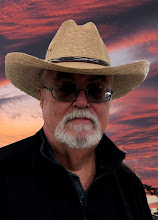 I haven’t read that many Warhammer 40,000 novels, but I’ve enjoyed the ones I’ve read. For those of you unfamiliar with them, these books are a rather odd mix of far-future space opera and gothic horror, featuring various groups of Space Marines who do battle for their emperor against not only aliens but also demons and other supernatural monsters. They’re related to the Warhammer sword-and-sorcery novels (both series are based on role-playing games produced by the same company, after all), but they can be read independently of each other.
I haven’t read that many Warhammer 40,000 novels, but I’ve enjoyed the ones I’ve read. For those of you unfamiliar with them, these books are a rather odd mix of far-future space opera and gothic horror, featuring various groups of Space Marines who do battle for their emperor against not only aliens but also demons and other supernatural monsters. They’re related to the Warhammer sword-and-sorcery novels (both series are based on role-playing games produced by the same company, after all), but they can be read independently of each other.THE KILLING GROUND is the fourth book in the Ultramarines series, featuring a couple of rugged Space Marines, Captain Uriel Ventris and Sergeant Pasanius Lysane. Picture, say, Gunner and Sarge in the far future, with no Pooch, for those of you with long memories of DC war comics. This is the first one I’ve sampled from this series, as well as the first thing I’ve read by author Graham McNeill, and while it’s very unusual for me to jump into a series in the middle – I’m obsessive enough to feel like I have to read a series from the first, in order – I didn’t have any trouble getting up to speed on the story, which says something for the author’s skill. Escaping from the calamitous events in the previous book, Uriel and Pasanius find themselves on the planet Salinas, which has a grim, bloody past and now finds itself engaged in guerrilla warfare as rebels battle against the local governor. As space-hopping science-fiction heroes always do, the two Ultramarines wind up being forced to choose which side they want to be on.
I’ve come to expect big, sprawling action scenes in both Warhammer and Warhammer 40K novels, and in that respect, the first half of THE KILLING GROUND sort of disappoints. The pace is a little slow, as McNeill spends a lot of time setting up the conflict on Salinas. But the second half of the book makes up for that with plenty of action. Stuff blows up real good, to say the least, and McNeill conjures up a number of bleak but striking images. Also, Uriel and Pasanius are really likable heroes and the reader can’t help but root for them.
It took me longer than usual to read this book, which is usually a sign that I don’t like what I’m reading. That’s not the case here. I’ve just been really busy and haven’t had much time to read. I thought THE KILLING GROUND was very good and liked it enough that I’m definitely going to search out the first three books in the series and read them, too. If you think you’d like space opera with some horror elements blended in, I recommend it.
















